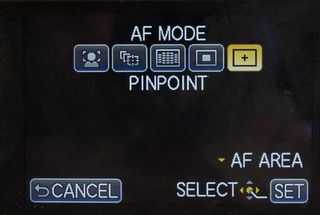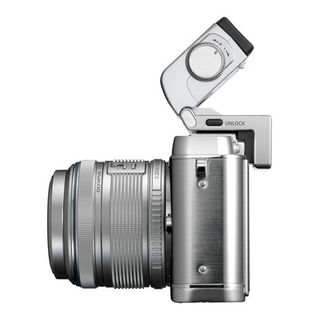What is a compact system camera?
Compact system cameras (CSC) explored

A compact system camera (CSC) works using a similar principle to DSLR technology: light enters the camera body and creates an image on the sensor. However, unlike a SLR there's no mirror system to reflect light into an optical viewfinder. Instead compact system cameras use a full time live view system on the LCD.
The mirrorbox sacrifice means a less bulky construction, but it doesn't always mean a viewfinder is an impossibility: as light feeds to the sensor, the camera can replicate that feed to a secondary LCD screen, known as an electronic viewfinder (EVF). Some models come with an EVF, some without, and some have a port to allow an optional external EVF to be connected.

Perhaps the biggest hurdle to overcome for compact system camera manufacturers was to produce a camera with contrast-detect autofocus able to match up to a DSLR's faster phase-detection system. Because the very makeup of a CSC depends on using live view and contrast-detect autofocus, the first few CSCs released just didn't compare.
However, the latest models have greatly improved sensors and focusing algorithms. By increasing the sensor's output speed, in models such as the Panasonic Lumix G3, the larger volume of information – at up to 120 cycles per second – means a rapid contrast detection process for an improved focus response.

CSC technology is now of the standard to significantly surpass DSLRs for live view work and the latest releases aren't far behind DSLRs as a whole – Olympus even claims its PEN E-P3 has the world's fastest autofocus
Pros and cons of compact system cameras

Initial teething problems put to one side, the current range of compact system cameras (CSCs) are very capable machines indeed. Because there's no mirror, the removal of this mechanical movement means faster burst speeds are often possible. The Sony NEX-7 and NEX-5N's 10fps continuous shooting modes make this abundantly clear.
The smaller size of compact system cameras is another potential benefit, plus lenses are smaller than their DSLR equivalents. The Micro Four Thirds system has the smaller sensor and therefore the smaller lenses, while other manufacturer's APS-C-sized sensors mean larger lenses but image quality that's more closely matched to a DSLR standard.
Get daily insight, inspiration and deals in your inbox
Get the hottest deals available in your inbox plus news, reviews, opinion, analysis and more from the TechRadar team.
The main downside to compact system cameras is that electronic viewfinders (EVFs) aren't all that great, yet. Low light introduces image lag and higher image noise in preview that doesn't make framing as preferable, plus the size of the EVF is often far smaller than an optical equivalent.

On the upside, an EVF will offer a 'what you see is what you get' 100% field of view, and many models can add virtual spirit levels or feed back a variety of information on the image area of the viewfinder. Further improvements are certainly being made – the Sony Alpha A77 includes a 3million dot OLED EVF, for example – but it will take time before this technology migrates to the more affordable, entry-level photography market.
The other thing to consider is that new ranges mean new lens fittings and, therefore, your existing lenses won't prove of much worth on a CSC camera. It also means the independent ventures of Sony, Samsung and Pentax don't offer a particularly fruitful selection of lenses when compared to the DSLR market – although research and development is hard at work in all camps to output a variety of lenses over the coming years.
Lens adaptors are available to use DSLR and other lenses, such as Leica glass, but there are often restrictions to autofocus and lens operability.
As manufacturers spend a lot of time creating models to entice new users into the market, there's a lack of high-end or professional kit currently available. It's plausible that this will appear later but, for now at least, the pro photography DSLR market will be hard to break.
Current page: How do compact system cameras work?
Prev Page What is a Compact System Camera? Next Page Which compact system camera to buy?